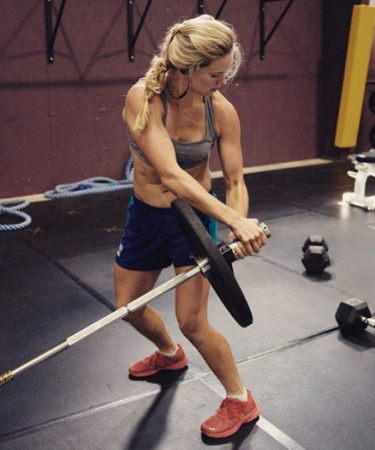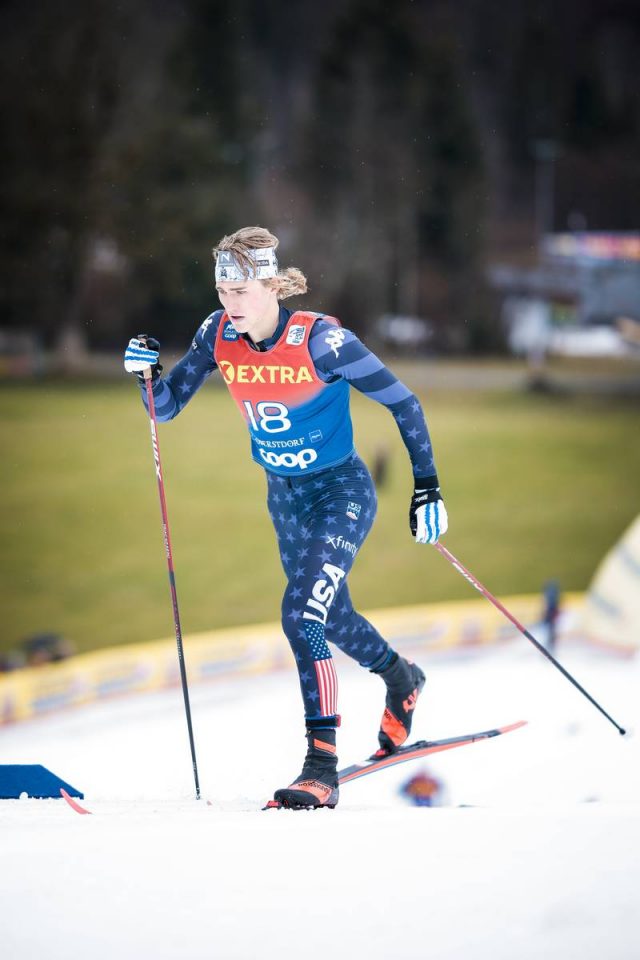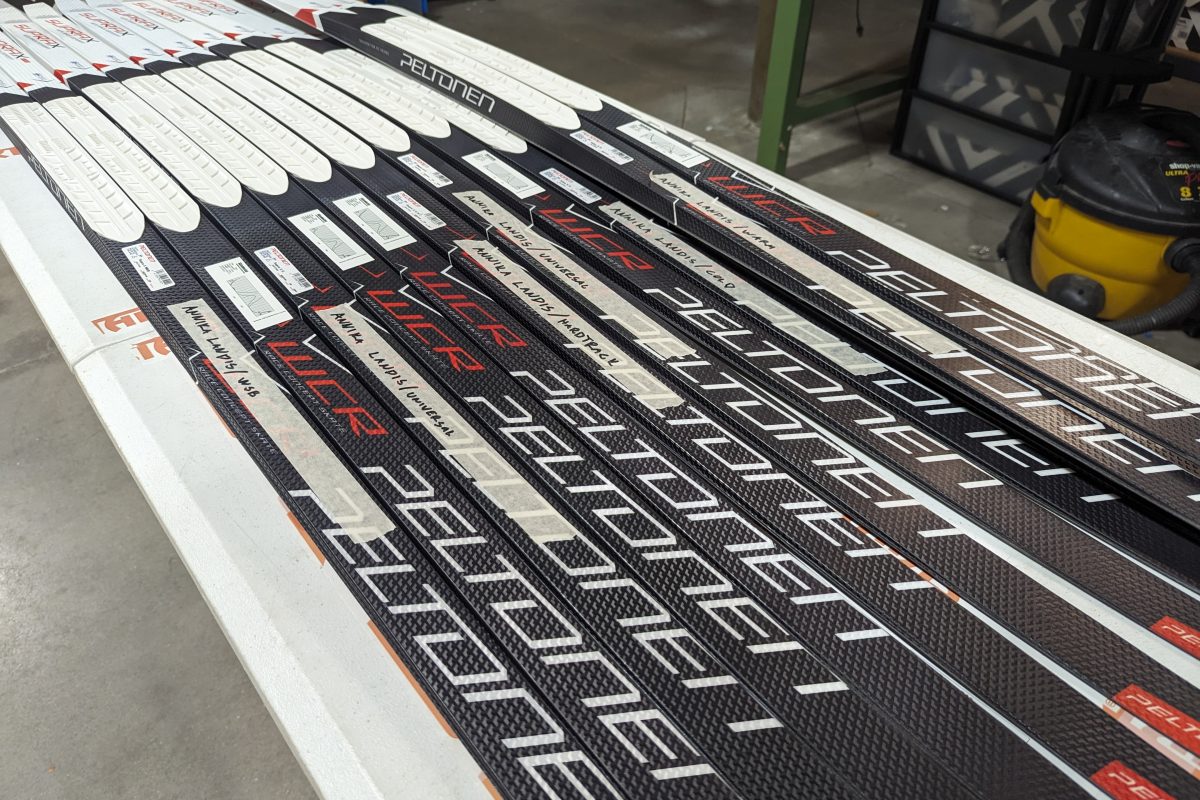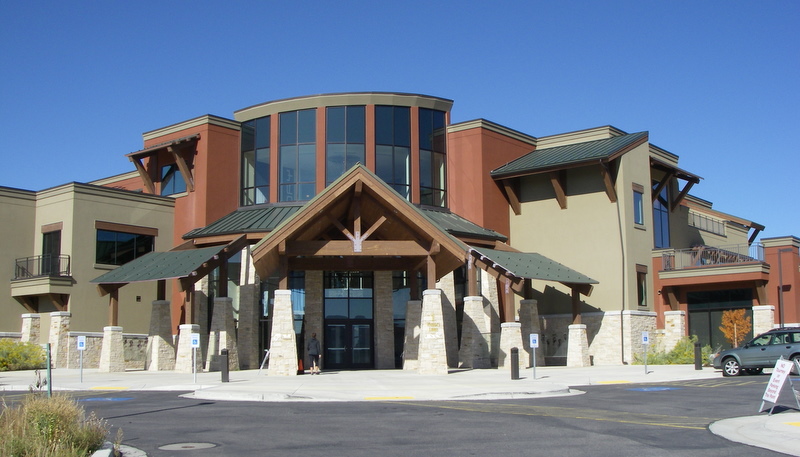
Ask most endurance athletes what quality they’d like to develop in their sport, and many would say “I want to be stronger.” Ironic, then, because “stronger” means different things to different athletes. To one, it means durable: able to withstand continued stresses and discomforts. To another, it means powerful: able to generate greater force in less time. To still another, it means actually stronger: able to move a heavier weight (regardless of the speed of the movement). When skiers say they want to be stronger, it seems what they mean is they want to be faster, and have that speed be sustainable throughout the distance of their events (those being the qualities that “strong skiers” display). The difficulty in training for that sort of improvement is that the quality they seek—speed—is actually produced by two different things: the push, and the glide. Greater speed comes from pushing harder. Maintaining speed is also facilitated by gliding more efficiently (effectively staying out of the way and letting the ski run). Skiers performing at top levels are adept at both, and both should be addressed in off-season training.

What is Strength?
Strength is the quality that allows an athlete to produce greater forces, or withstand greater pressures. In the ski world, it means simply that the stronger skier pushes harder (a measure that will also include a factor of power). When Magnus Boee (University of Colorado) double-poled away from the entire field in the NCAA Mass Start Classic finale, his advantage over everyone else was primarily a factor of strength: he simply put more force into each double pole than did his competitors. True, he also possessed the endurance to maintain that physiologically expensive effort longer than his competitors (and farther up each uphill than anyone else), but Boee’s incredible strength is what made his speed possible in the first place.
Pushing
Push harder: go faster. It’s a simple equation that appears true regardless of any athlete’s technique or efficiency. Improving strength and power allows a skier to ski faster. Physiologically, strength takes longer to develop than does endurance; therefore, if one of my goals is to be stronger next season, my regimen of strength training should begin very early. Many coaches would advise that strength, for skiers, is a whole-body thing, with some special emphases being placed on certain muscles that are crucial to ski technique and ski propulsion.
The exercises that I typically include in ski-strength training programs are those that involve large muscle groups and full body movements (not the practice of isolating muscles like a body builder would). Skiers ski with their whole body; therefore, I like to recommend power-exercises that utilize free weights (and/or body weight) rather than machines. Standing push presses, cleans, upright rows, bent-over rows, squats, one-leg squats, step ups, et. al., allow the athlete to move the weight quickly, encouraging techniques that elicit some “pop.”
One recommendation: strength training should be conducted when the athlete is fresh, NOT when the athlete is already tired. Simply put, go to the gym first and go for a training run later (not the other way ’round).
Another recommendation: train one thing at a time (don’t try to make strength training into more endurance training). There’s no need to keep your heart rate high during strength training. While circuit training can be valuable, the fact that your pulse is elevated is actually hindering your physiological ability to train for strength.

Gliding
Holding yourself in the correct body posture to maximize glide during either Classic skiing or Freestyle skiing (hips forward, chest up, ankles flexed) can be an exhausting challenge, one that most ski-athletes find supremely difficult to sustain. Drills and exercises that develop stabilizer muscles (core exercises, balance drills, planks, etc.) can improve an athlete’s gliding characteristics and stability. Those are an important part of any dryland training program, and can produce a bit more speed in next year’s performance (allowing the athlete to maintain proper glide-posture, AND potentially to do so for a longer period of time). Even so, balance/stability training is not a replacement for strength training. Greatest gains in ski-speed come from pushing harder . . . and that means strength training.
All this is just a long-winded way of professing that training for next season should be far more complex and comprehensive than simply hopping back on my roller skis. Ski racers are athletes who will benefit from a variety of training exercises and workouts in order to develop the numerous components of ski-success. The dryland training season is actually pretty short; there’s simply not much time to develop these new qualities. Getting started in the spring—on strength, on power, on glide—will make for a better, speedier winter.
John Teaford
John Teaford—the Managing Editor of FasterSkier — has been the coach of Olympians, World Champions, and World Record Holders in six sports: Nordic skiing, speedskating, road cycling, track cycling, mountain biking, triathlon. In his long career as a writer/filmmaker, he spent many seasons as Director of Warren Miller’s annual feature film, and Producer of adventure documentary films for Discovery, ESPN, Disney, National Geographic, and NBC Sports.



